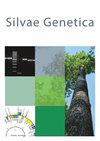具有最佳 PCR 可靠性的 Pyracantha crenulata 改良型有效 DNA 提取方案
IF 1
4区 农林科学
Q3 FORESTRY
引用次数: 0
摘要
从组织/细胞中获取高质量的 DNA 有许多挑战,尤其是使用植物作为原材料时。为了从Pyracantha crenulata叶片中分离出高质量的基因组DNA,我们采用了三种不同的DNA提取方案。Pyracantha crenulata 是蔷薇科常绿灌木,品种复杂,用途广泛,具有重要的生态、经济和文化价值。该物种会产生宝贵的抗氧化剂,如多酚、多糖和次生代谢物,这些物质会干扰 DNA 的提取,因此很难对该物种进行基于分子标记的研究。本研究旨在为富含盐类和酚类的 P. crenulata 树叶开发一种简单、快速、经济高效的提取方法。结果表明,改良的 CTAB(双缓冲液)方案能有效克服阻碍下一代测序分析的难题。提取 DNA 的产率非常高,从 368 到 410 ng/μL DNA 不等,A260/280 比值从 1.80 到 1.84 不等。提取的 DNA 可以进行 PCR 扩增,因此适用于基于 DNA 的分子标记研究。目前还没有针对该物种的提取方法,因此,本研究首次报道了基于双缓冲液的 P. crenulata 提取方法,该方法可能对蔷薇科的其他物种有用。本研究描述了一种有效的 DNA 分离方法,适合于频繁的种群遗传筛选。总之,双缓冲液方案是从富含酚的新鲜、成熟和干燥叶片中提取 DNA 的最有效方法。本文章由计算机程序翻译,如有差异,请以英文原文为准。
An improved and effective DNA extraction protocol for Pyracantha crenulata with optimal PCR reliability
There are many challenges involved in obtaining high-quality DNA from tissues/cells, especially when using plants as the raw material. Three different DNA extraction protocols were employed in order to isolate high quality of genomic DNA from Pyracantha crenulata leaves. P. crenulata is a complex, versatile, and evergreen shrub species in Rosaceae family which is ecologically, economically and culturally important. This species produces valuable antioxidants like polyphenols, polysaccharides and secondary metabolites which interfere with DNA extraction thus making molecular marker based studies difficult in this species. This study aimed to develop a simple, rapid, cost-effective and highly efficient protocol for P. crenulata leaves rich in salts and phenols. The results demonstrated that modified CTAB (double buffer) protocol is very effective in overcoming the challenges that could impede next-generation sequencing analysis. The yield of the extracted DNA was excellent ranging from 368 to 410 ng/μL DNA with A260/280 ratio ranging from 1.80 to 1.84. The extracted DNA was amenable to PCR amplification making it suitable for DNA-based molecular marker studies. None procedures have been published for the purpose up this species, therefore, double buffer based extraction protocol is reported for the first time in P. crenulata and might prove useful in other species of family Rosa-ceae. This study describes an effective DNA isolation method that is appropriate for frequent population genetic screening. In conclusion, the double buffer protocol showed the most efficient and effective approach for extracting DNA from phenol rich, fresh, mature, and dry leaves.
求助全文
通过发布文献求助,成功后即可免费获取论文全文。
去求助
来源期刊

Silvae Genetica
农林科学-林学
CiteScore
2.20
自引率
10.00%
发文量
10
审稿时长
3 months
期刊介绍:
Silvae Genetica is an international peer reviewed journal with more than 65 year tradition and experience in all fields of theoretical and applied Forest Genetics and Tree breeding. It continues "Zeitschrift für Forstgenetik und Forstpflanzenzüchtung" (Journal of Forest Genetics and Forest Tree Breeding) founded by W. LANGNER in 1951.
 求助内容:
求助内容: 应助结果提醒方式:
应助结果提醒方式:


